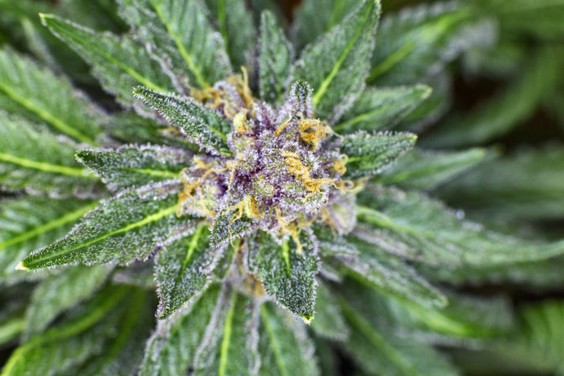Purple cannabis: Should you consider trying it?

Purple cannabis is an umbrella term for a growing family of strains that share a colour as much as they share a distinct taste, smell and stony effect.
Purple is the colour of royalty, so it’s the perfect shade for a classic strain of cannabis that anyone who calls themselves a connoisseur should know.
Here’s everything one should know about Purple cannabis.
Origin of Purple Cannabis
What newer generations of cannabis users may not know is that Purple was once the hottest strain both in dispensaries and on the streets. The exact birthplace of Purple cannabis is unknown, but seed companies such as Purple City Genetics believe it originated in Humboldt, Calif., and was popularized in the San Francisco Bay Area.
Others point to grower Kenneth Morrow of Trichome Technologies as its creator, as he produced Purple Kush back in 1995.
One of the most popular Purples, known as Granddaddy Purple (or GDP), was grown by Ken Estes, an old-school cannabis legend who credits his famous cut of GDP to Vietnam veterans who returned from overseas with seeds from Thailand and Afghanistan. It’s likely that Purples descend from an old Afghani landrace cut, or even a version of Skunk.
What is Purple cannabis?
Purple cannabis is an umbrella term for a growing family of strains that share a colour as much as they share a distinct taste, smell and stony effect.
There are a couple of theories as to what gives some cannabis plants a purple hue, ranging from lavender to deep black-purple, but not all of them are true. What makes Purple purple, long-time cannabis breeder Todd McCormick says, are the flavonoids of certain genetics, and that “Afghan genetics are the genetics responsible for the purple colours in broad leaflet cannabis.”
One of the biggest appeals of Purple cannabis, besides its colour, is its taste. Purple cannabis strains often taste “purple,” too, like a sweet candy grape that can even express floral notes.
Due to their genetics, Purple strains are almost always indicas unless crossed with something else. They are also known for the intense body high that patients reported was great for chronic pain without totally wiping the mind.
But despite this intense effect, Purple cannabis has never been a high-THC producer, averaging about 15 to 16 per cent.
How does it compare?
Purple strains are most comparable to Kush strains, as they share the intense couch-lock of a pure indica and a similar stocky look to the plants as they flower. The unique flavour profile, which likely draws on terpenes like linalool, is something that sour and Haze can’t achieve.
Kay Watt, principal geneticist at Dark Heart Nursery, says that Purples were always popular with medical patients for their intense pain-numbing effects, but weren’t as mentally sedating as Kush or Skunk could be.
One downside to Purple might be that it’s so tough to find, because the plants themselves don’t produce big yields, making them more costly to grow.
Bottom line
The beauty of cannabis is that it’s so abundant that people can find the right strain for themselves. Purple cannabis was an incredibly popular strain among people with chronic pain and nausea, but it was also a euphoric high that didn’t leave its users asleep or in a daze.
It won’t provide the energy of a sativa, such as with Haze or Sour Diesel, so it’s not the best for a busy or active lifestyle. Ask anyone who’s tried Purple and they probably liked it, although as always is the case, a person can only tell by checking it out.
420 Intel is Your Source for Marijuana News
420 Intel Canada is your leading news source for the Canadian cannabis industry. Get the latest updates on Canadian cannabis stocks and developments on how Canada continues to be a major player in the worldwide recreational and medical cannabis industry.
420 Intel Canada is the Canadian Industry news outlet that will keep you updated on how these Canadian developments in recreational and medical marijuana will impact the country and the world. Our commitment is to bring you the most important cannabis news stories from across Canada every day of the week.
Marijuana industry news is a constant endeavor with new developments each day. For marijuana news across the True North, 420 Intel Canada promises to bring you quality, Canadian, cannabis industry news.
You can get 420 Intel news delivered directly to your inbox by signing up for our daily marijuana news, ensuring you’re always kept up to date on the ever-changing cannabis industry. To stay even better informed about marijuana legalization news follow us on Twitter, Facebook and LinkedIn.




